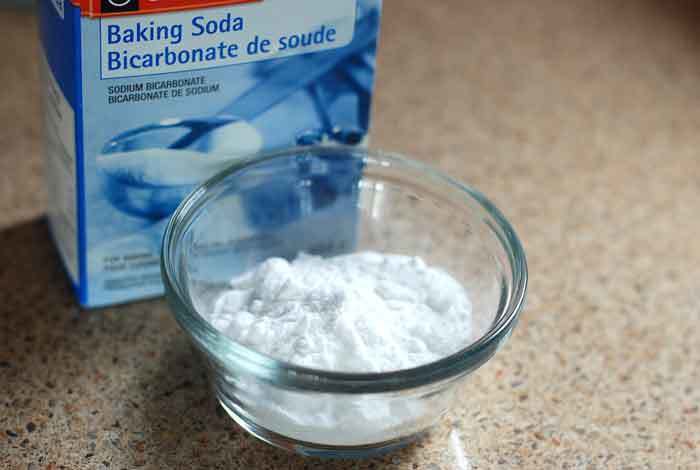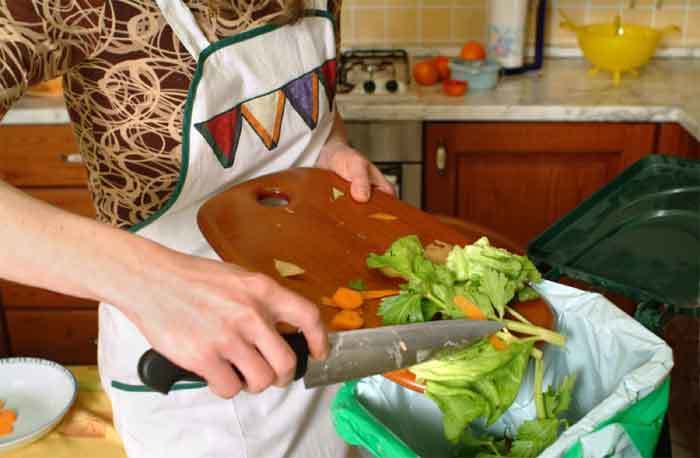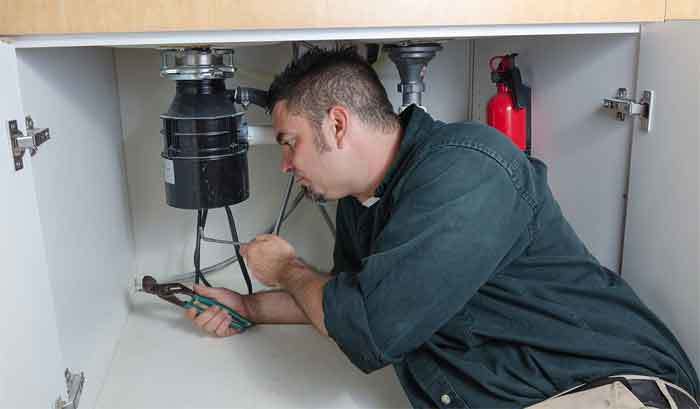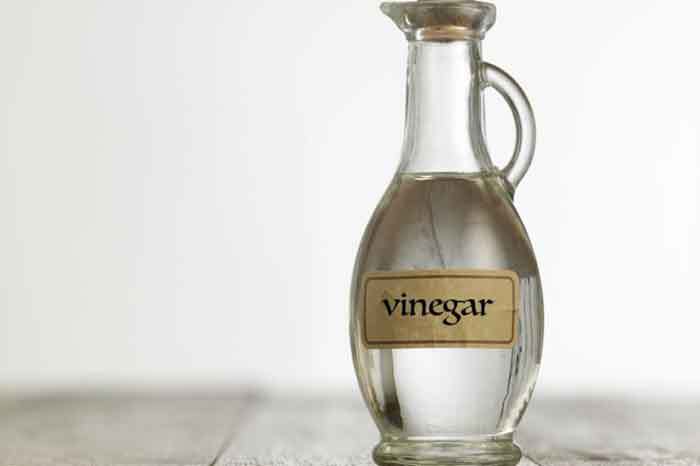Disclaimer: This post may contain affiliate links, meaning we get a small commission if you make a purchase through our links, at no cost to you. For more information, please visit our Disclaimer Page.
When everything in your household is functioning smoothly you do not even think of how big of a nuisance household issues may be. Broken down appliances, cleaning stains and clogged drains, anyone?
Fixing some of those issues is beyond our power and we may need to call a professional to help or purchase new items and so on.
However, there are some things that you can do yourself, especially if you are into DIY projects.
Unclogging a backed up garbage disposal drain or a sink drain is usually one of those things that you can safely and easily do yourself with just a few ingredients which you, chances are, already have in your kitchen.
If not, you definitely should get your hands on those ingredients as they are helpful for many things around the household due to their attributes.

How do you know that your garbage disposal is clogged?
The first sign of a clogged garbage disposal is a backflow of water in your sink. The reason for it is a build-up of organic matter in the pipes and the drain.
It happens either because the food has not been cut up finely enough for it to pass, or you have put inside something that is not suitable for a garbage disposal (like potato peels or chicken bones or a part of a plastic accidentally went down there and you were hoping that nothing would happen).
To avoid this in the first place, use the garbage disposal for what it was meant for.

Another sign is a bad smell that comes out of your garbage disposal and stinks up the kitchen.
The reason for that is that the organic matter in the drain and the pipes has started to decompose (or simply- rot) inside, causing the bad odor.
Aside from the inconvenience of the bad smell, the build-up of decomposing parts of food forms a slimy matter that sticks to the walls of the pipes congesting them and causing the backflow as well.
What can you do to fix it?
Before resorting to using chemicals or even the stuff that we recommend, try to see if there is something in the sink that is causing the obstruction.
Before you start, take precautions and switch of the garbage disposal - electricity, especially in combination with water can really hurt you.

After you have made sure that you are safe, take a flashlight to see if there is something close to the top, if there is use a pair of pliers or some sort of a thin hook (made from a wire or an old hanger) and carefully pull the blockage out.
If there is nothing visible at the top, the blockage is probably deeper in the pipe.
The next step would be to try to use a plunger. The vacuum that it creates causes the slime and the grime to separate from the pipe walls making it easier for the water to wash it out.
However, if nothing helps - baking soda to the rescue!
There are two most common ways to use baking soda to unclog the drains and the magical combinations are baking soda and white vinegar, and baking soda and salt, both with the help of (almost) boiling hot water.
How to Unclog a Garbage Disposal with Baking Soda
Strategy 1
Ingredients:
- 2 pots of hot water
- 1 cup of baking soda
- 1 cup of white vinegar
*If you own a garbage disposal that has two sinks, double the ingredients for each sink.
The first step in using this option would be to pour one pot of hot water into the sink - it will soften the matter inside the pipes making it easier for the soda and vinegar to do their magic. You should wait a couple of minutes for the water to work.
Next, pour a cup of baking soda inside. You may want to switch on the garbage disposal for a couple of seconds; it will help distribute the baking soda around the drain evenly in order for it to reach every corner.
Again, leave it for a couple of minutes before the next step which would be adding vinegar.
So, add a cup of white vinegar to the drain, do it rather slowly as it causes a chemical reaction in combination with the baking soda.
You will notice foam coming out of the sink drain, and hear a fizzing noise (Remember science fair volcanoes? Yes, it is the same process.).
It is okay, this is what you want. If you are able, put a drain stopper in the drain to contain the process inside the pipes and prevent it from coming out.
Leave it to work for at least 10 minutes but no longer than 30 minutes since, especially if the pipes and drain were without water, the residue can harden and cause a bigger problem.

The next thing to do is add another pot of boiling water, and voila! Your garbage disposal drain is unclogged.
Optional: You can turn on the garbage disposal before adding the last pot of water, it will separate the particles even more.
If you have a two-sink system, do the same thing with both sinks simultaneously.
This should do the trick and you should be able to get on with your normal activities, however, if the sink is really clogged, you may need to repeat the process again.
The science behind it: Baking soda, or sodium bicarbonate, is actually a slightly alkaline salt, and in combination with a mild acid that is white vinegar produces a chemical reaction that helps break up grease particles.
Some argue that there is no sense in it since we know that a combination of a base and an acid produces water and salt residue, however, it works, if not for the chemical reaction itself, then for the mere mechanical properties of foaming intensely.
Click here for more uses of baking soda and vinegar.
Strategy 2
Ingredients:
- 1 cup of baking soda
- 1 cup of salt
- 1 pot of boiling water
The first step would be to stir the baking soda and salt until they are evenly mixed.
The next thing you should do is to pour the mixture inside the drain (run the garbage disposal to distribute the mixture evenly) and leave it sit for at least 2-3 hours to dissolve the clog. If you are able, leave it overnight for better results.
After you have waited for the mix to work, heat up the hot water and pour it slowly into the drain. Do it in three stages letting the hot water work for 2-3 seconds between each pour.
This should be enough, however, if you need to, repeat the process again. With more serious clogs you can also pour another pot of hot water before adding the mixture in order to clear grease.

The science behind it: Salt and baking soda have an abrasive nature that scours the inside of the pipes and forces out the grease.
The salt has antiseptic properties that kill the bacteria that have set up a home in the rotting food remains.
The baking soda's alkaline nature dissolves grease which is slightly acidic, and it also helps remove mineral deposits which water leaves. The added hot water helps flush out the remaining blockages.
Benefits of using baking soda
One of the first things that come to mind is that it is cheap and readily available in your kitchen when the clog happens. The other thing is, it is safe to use.
You do not have to worry about inhaling harmful chemicals, or being hurt by accidental chemical burns like when you are using industrial solutions for unclogging the drains.
Baking soda is mild and in both cleaning options it is gentle to the pipes and sinks of any material, so there's one less thing to worry about. And, in addition, it is eco-friendly.

On Unclogging a Garbage Disposal with Baking Soda
Using baking soda for unclogging the garbage disposals and sinks is a safe and way to do that. However, if the problem persists, you might want to call a plumber.
In any case, if you clean your drains with either of the baking soda methods once a month, the process will clean the drains in a timely manner preventing the clog in the first place.
